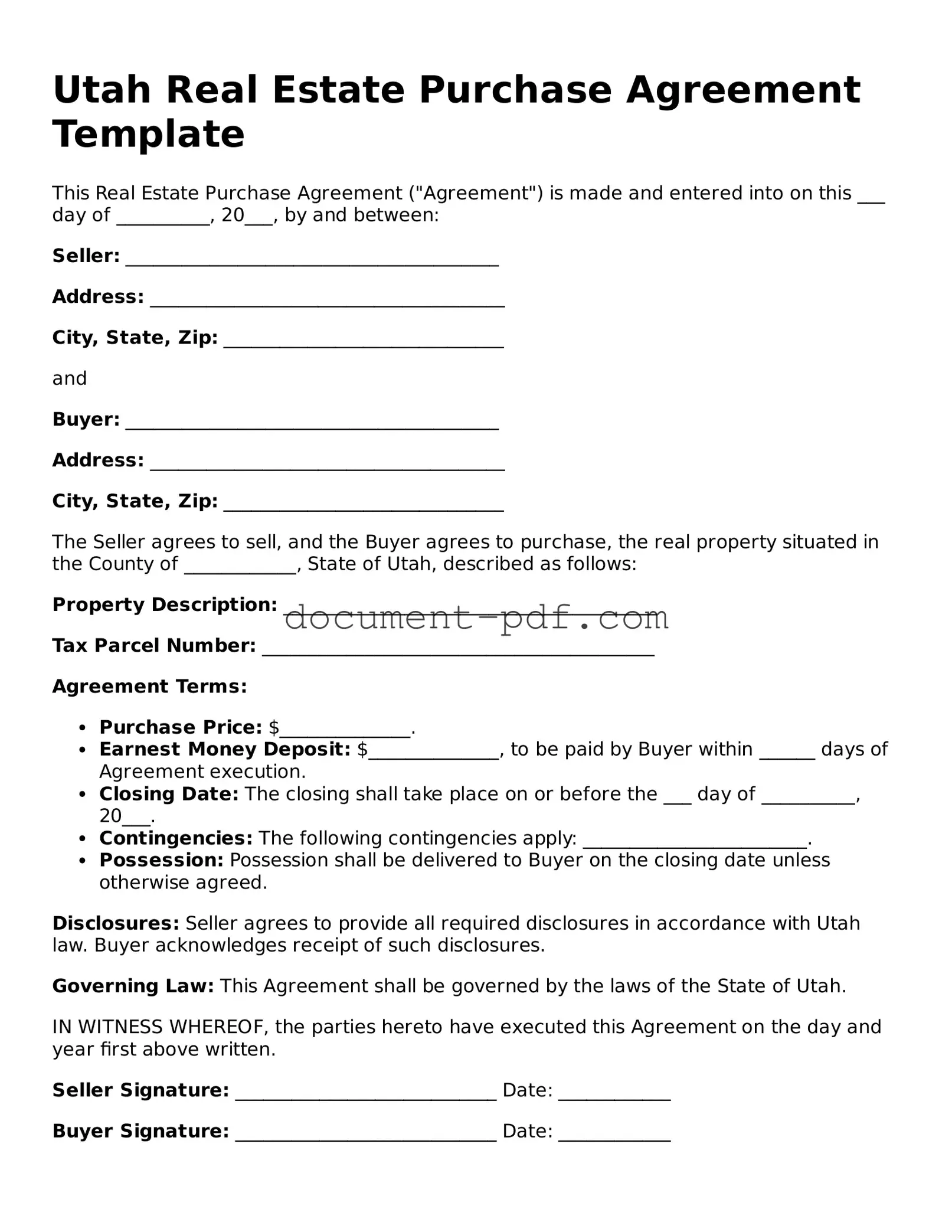Utah Real Estate Purchase Agreement Template
This Real Estate Purchase Agreement ("Agreement") is made and entered into on this ___ day of __________, 20___, by and between:
Seller: ________________________________________
Address: ______________________________________
City, State, Zip: ______________________________
and
Buyer: ________________________________________
Address: ______________________________________
City, State, Zip: ______________________________
The Seller agrees to sell, and the Buyer agrees to purchase, the real property situated in the County of ____________, State of Utah, described as follows:
Property Description: ________________________________________
Tax Parcel Number: __________________________________________
Agreement Terms:
- Purchase Price: $______________.
- Earnest Money Deposit: $______________, to be paid by Buyer within ______ days of Agreement execution.
- Closing Date: The closing shall take place on or before the ___ day of __________, 20___.
- Contingencies: The following contingencies apply: ________________________.
- Possession: Possession shall be delivered to Buyer on the closing date unless otherwise agreed.
Disclosures: Seller agrees to provide all required disclosures in accordance with Utah law. Buyer acknowledges receipt of such disclosures.
Governing Law: This Agreement shall be governed by the laws of the State of Utah.
IN WITNESS WHEREOF, the parties hereto have executed this Agreement on the day and year first above written.
Seller Signature: ____________________________ Date: ____________
Buyer Signature: ____________________________ Date: ____________
